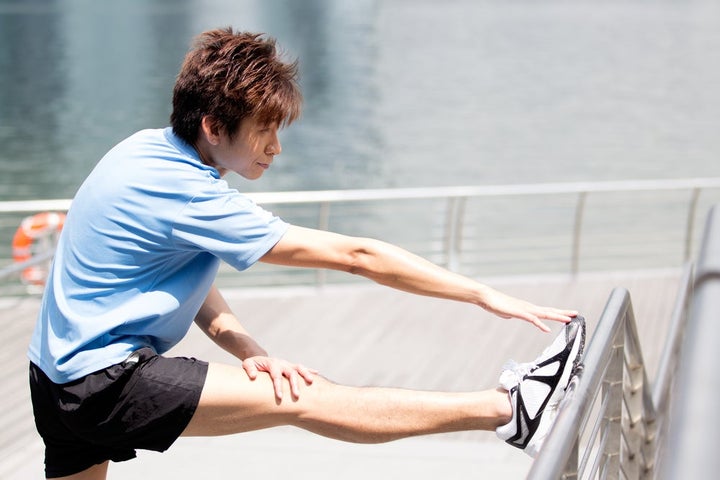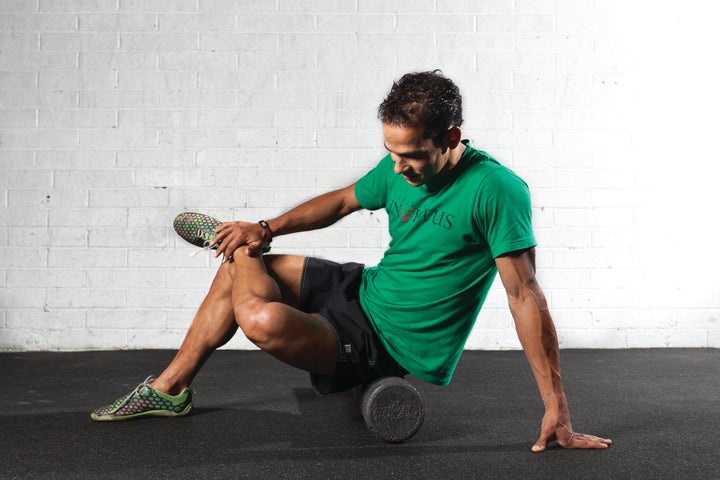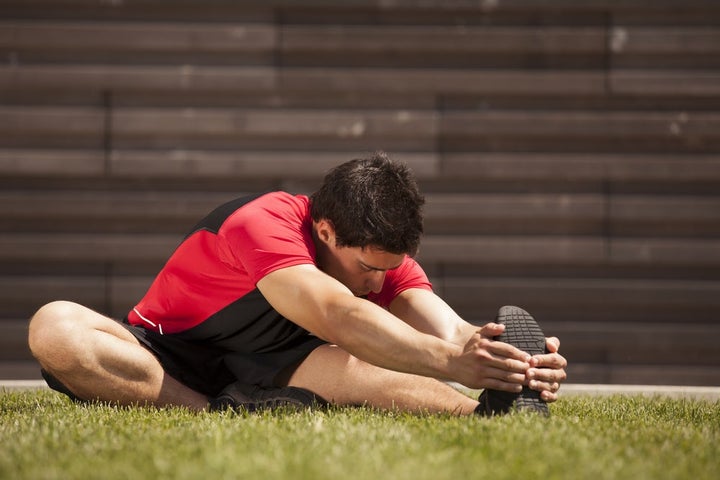The conventional wisdom on static stretching is that flexible runners are less injury-prone. This belief is played out every day as runners strike stretching poses to “loosen up” before a run—ostensibly to feel good, run faster and prevent muscle strain.
It’s time to confront that conventional wisdom. Because it’s wrong.
See, runners don’t need that much flexibility. After all, we’re endurance athletes, not gymnasts. The ability to do a split or even touch your toes is not an indication that you’re particularly resilient to injuries or have better running aptitude.
In fact, static stretching before a run may actually increase your injury risk and decrease performance—exactly the opposite of what a proper warm-up ought to do!

That’s because the vast majority of running injuries occur within the normal range of motion of running. You don’t need more flexibility to help with injuries. And a 2004 meta-study by the CDC found that static stretching has no effect on injury rates.
Moreover, improving flexibility pre-run can lead to worsening performances, particularly in a race or fast workout. Runners need muscle tension to use their legs economically as springs or Pogo Sticks. Being too flexible, like having a weak spring, will result in slower finish times.
So while runners have historically been focused on flexibility, it’s far more valuable to focus on mobility.
Mobility, Not Flexibility
Flexibility is the ability to achieve a high range of motion at the joints—like doing a split or touching your toes.
But mobility is different; it’s the ability to move through a normal range of motion with strength (in other words, it’s an active skill while flexibility is passive).
Mobility lets us sprint, move over hurdles, run gracefully over technical trails, and tackle some basic obstacles.
Instead of engaging in a lot of static stretching, we can improve mobility through training with many types of workouts, drills, and other exercises:
- A dynamic warm-up performed before a run, including elements like lunges, hurdle mobility, scorpions, skips and leg swings
- Weightlifting that prioritizes strength and power
- Sprints, strides, and fast workouts
- Hill training with a variety of types of workouts
- Form and technique drills
Any runner who regularly incorporates a variety of workouts, paces, terrain, strength exercises, and drills will have better mobility than a runner who “just runs.” Moving the body through a wide assortment of movements and speeds is how you build movement competency.
Mobility can also be improved with foam rolling–massage brings fresh, oxygenated blood to sore muscles, increases range of motion, promotes relaxation, and reduces stress hormones.

Combined, this approach will help you feel looser, more athletic, and responsive when it comes time to perform. And the side benefits are that you’ll be stronger, less susceptible to injuries, and faster!
But that doesn’t mean that there’s no place for static stretching at all.
When to Static Stretch
Some runners might find it difficult to give up their static stretching habit. And I firmly believe that if you enjoy stretching, if it makes you feel good, and if it helps you relax after a run then it can still be used in your training.
The important aspect of static stretching is its timing. Done pre-run and you’ll spike your injury risk and reduce performance. But stretching at the very end of a training session doesn’t have any drawbacks.

Most athletes can spend 30-60 seconds stretching each major muscle. This is long enough of a time period to help the muscle relax, loosen, and stretch without overdoing it.
Runners who have specific, diagnosed flexibility issues might need to engage in additional static stretching. For example, if you’ve spent decades sitting in a chair for work, you may need to lengthen the hip flexors. Static stretching is one of the only ways to accomplish this.
“Improvements in flexibility come from long duration stretches that physically tear the tissue surrounding muscle fibers to increase mobility within the muscle,” says Jay Dicharry, physical therapist and director of the REP Biomechanics Lab in Oregon. Dicharry says lengthening may require focused 3–5 minute stretches done four to six days a week for 10 to 12 weeks.

If you have a chronic injury that is triggered by inflexibility in other tissues, a physical therapist can help you isolate specific muscles that need static stretching.
But for most runners, moderate static stretching can be reserved as a relaxing “finisher” for the very end of a training session, completed after the run and a post-run strength routine.
If you don’t enjoy stretching? You can skip it! The vast majority of mobility needs are met through effective training, which doesn’t require any static stretching. It’s your choice.

